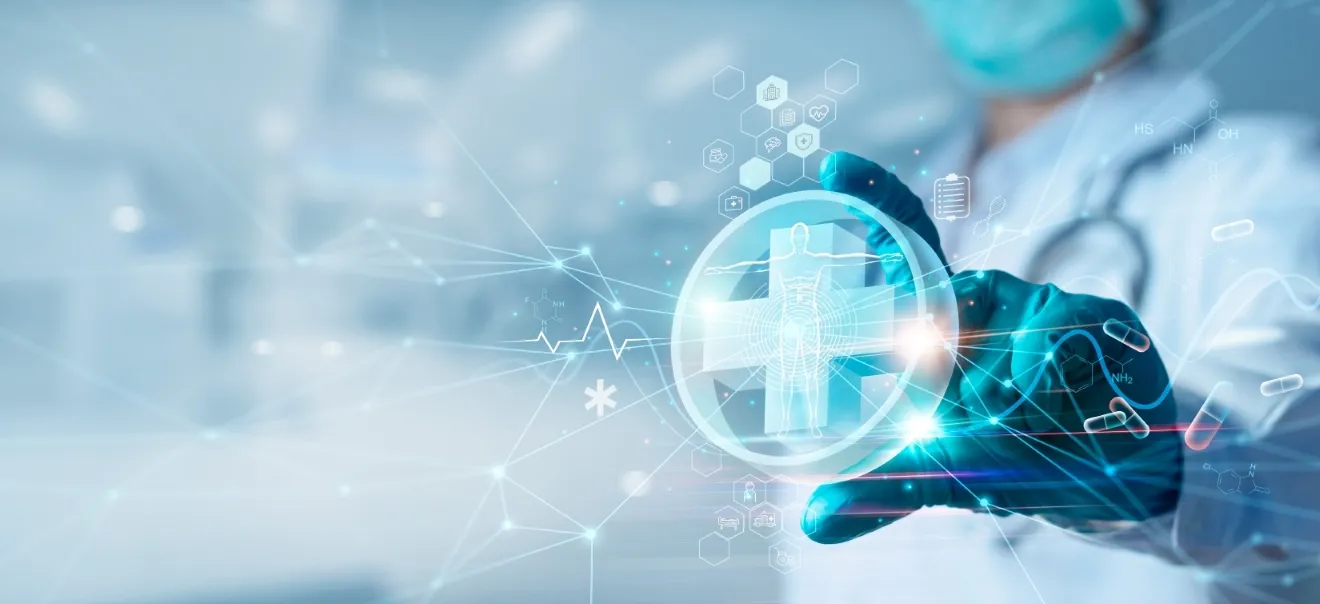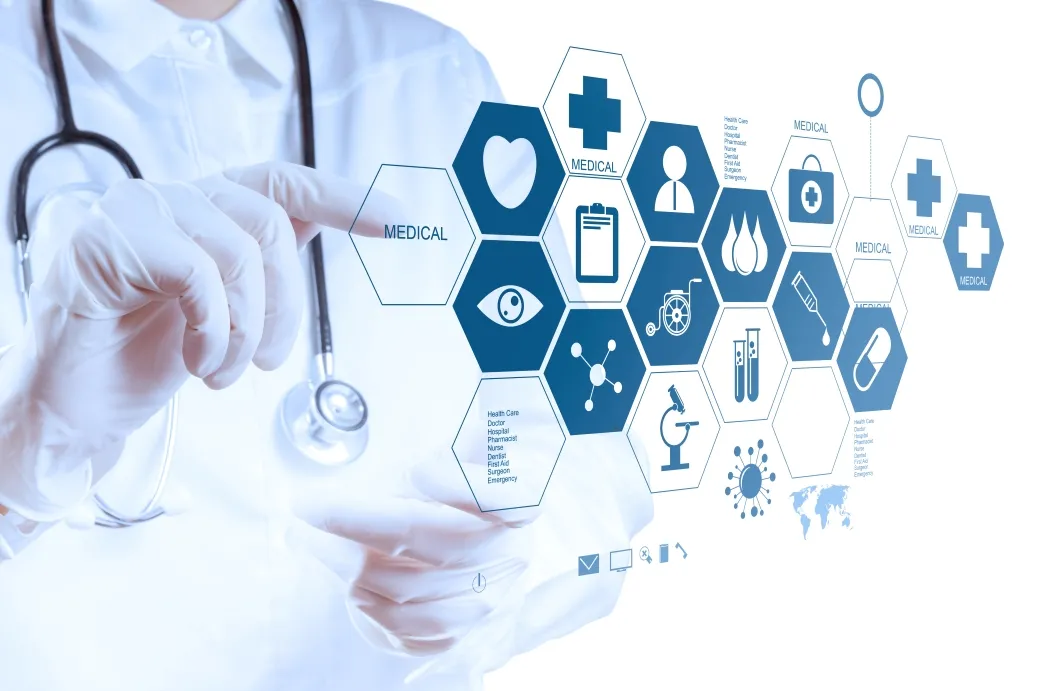Introduction: The Future of Stem Cells in 2025
Stem cells, renowned for their regenerative capabilities, are poised to revolutionize medicine by providing new therapeutic options for patients with chronic diseases and degenerative conditions. The stem cells market in 2025 is at a critical juncture, with research, clinical trials, and commercialization efforts advancing at a rapid pace. As the demand for personalized medicine increases, stem cells are becoming the cornerstone of innovative treatments that aim to regenerate damaged tissues and organs, offering solutions where traditional therapies fall short.
Key Market Drivers Shaping the Stem Cells Industry in 2025
Several factors are contributing to the robust growth of the stem cells market. The primary drivers include:
- Rising Prevalence of Chronic and Age-Related Diseases
Chronic diseases such as diabetes, cardiovascular diseases, and neurological disorders are becoming more prevalent globally. As these diseases become more complex, conventional treatments are proving insufficient, leading to increased interest in stem cell-based therapies. Stem cells can repair or replace damaged tissues, offering significant promise for these medical conditions. - Aging Global Population
The aging population worldwide is another critical factor driving the market. As people live longer, the incidence of degenerative diseases increases. Stem cells present an innovative solution for regenerating tissues and organs that deteriorate with age, which is creating a demand for new and effective treatments. - Expanding Research and Government Support
Government initiatives and increased funding for stem cell research are also fueling the market’s growth. Research institutions and biotechnology companies are working to unlock the full potential of stem cells, and favorable regulatory environments are accelerating the approval process for stem cell-based therapies.
Innovative Technologies Powering the Stem Cells Market
The stem cells market in 2025 is being heavily influenced by groundbreaking innovations that enhance the effectiveness and scope of stem cell therapies:
- CRISPR and Gene Editing
CRISPR-Cas9 and other gene-editing technologies are enabling scientists to modify stem cells at the genetic level. This technology holds immense potential for treating genetic disorders, as it allows for the correction of mutations at their source. With CRISPR, the ability to offer personalized treatments that target the root cause of diseases is closer than ever. - Artificial Intelligence in Stem Cell Research
The integration of artificial intelligence (AI) into stem cell research is revolutionizing the industry. AI-powered algorithms are helping researchers analyze vast amounts of data, predict therapeutic outcomes, and discover novel stem cell applications. By streamlining the research process, AI accelerates the path from lab to clinic, bringing therapies to market more quickly and efficiently. - 3D Bioprinting
3D bioprinting technology is paving the way for creating functional tissues and organs. By using stem cells in combination with bioprinting, researchers can build human tissues for transplants, reducing the need for donor organs. This cutting-edge approach could ultimately lead to breakthroughs in organ regeneration and transplantation.
Regional Market Dynamics in the Stem Cells Industry
Understanding the regional dynamics of the stem cells market is essential for businesses and investors. Market growth varies by region, influenced by healthcare infrastructure, regulatory policies, and investment in research and development:
- North America
North America, particularly the United States, is the leader in stem cell research and therapy development. With substantial investment in biotechnology and medical research, the U.S. continues to dominate the global stem cell market. The country’s supportive regulatory framework, coupled with a large number of biotech companies and research institutions, creates a fertile environment for innovation in stem cell therapies. - Asia-Pacific
The Asia-Pacific region is rapidly emerging as a key player in the stem cells market. Countries like China, Japan, and South Korea are making substantial investments in stem cell research. China, with its relaxed regulatory approach, is a hub for clinical trials and stem cell-based therapeutic applications. The growing patient population and government-funded initiatives in these countries make the Asia-Pacific region a significant market for stem cell therapies. - Europe
Europe is also a prominent player in the stem cells market, driven by its stringent regulatory frameworks that ensure high ethical standards while promoting innovation. The European Union has invested heavily in stem cell research, making it an important region for clinical trials and commercialization of stem cell therapies.
Strategic Considerations for Market Players
To stay competitive in the stem cells market, businesses and investors must consider several strategic factors:
- Regulatory Compliance and Market Entry
Regulatory challenges are significant in the stem cells market. Ensuring compliance with local and international regulatory standards is crucial for the successful commercialization of stem cell therapies. Companies must stay updated on evolving regulations to avoid delays in product approval. - Collaborations and Partnerships
Forming strategic partnerships with universities, research institutions, and other biotech firms can enhance a company’s capabilities. These collaborations help access new technologies, share expertise, and accelerate the development of stem cell-based therapies. - Focus on Personalized Medicine
Personalized medicine is the future of healthcare, and stem cells are at the heart of this revolution. By tailoring therapies to an individual’s genetic makeup, stem cells can provide more effective treatments. Companies that focus on personalized, patient-centric therapies will have a competitive advantage in the market.
Conclusion: The Bright Future of the Stem Cells Market
The stem cells market in 2025 is on the cusp of a new era in healthcare, characterized by rapid technological advancements and increasing demand for regenerative treatments. As the global population ages and chronic diseases rise, stem cells will play a critical role in transforming the healthcare landscape. To succeed, businesses must stay ahead of innovation trends, regulatory changes, and market dynamics, all while keeping patient needs at the forefront. With ongoing research and investment, the potential for stem cell therapies to revolutionize medicine and improve patient outcomes is immense.
NOTE:
Quants and Trends is proud to offer an extensive portfolio of meticulously researched healthcare market reports, numbering in the thousands. We also provide tailored customization services to ensure our insights align precisely with your strategic objectives and informational needs. For personalized assistance or to discuss your specific requirements, we invite you to get in touch with our team. We also encourage you to request a complimentary sample PDF report. Please visit our Sample Request Page to receive yours today.
Key Market Players
Osiris Therapeutics
NuVasive
Chiesi Pharmaceuticals
Medi-post
JCR Pharmaceutical
MolMed
Pharmicell
Anterogen
Takeda (TiGenix)
CBR
ViaCord
Esperite
LifeCell
CCBC
VCANBIO
BOYA LIFE
Beike Biotechnology
International Medical
Global Cord Blood Corporation
Beijing Health-Biotech Group
ABMD
Segmentation By Type
Stem Cell Storage
Stem Cell Pharmaceutical and Treatment
Segmentation By Application
Blood Disease
Cancer
Autoimmune Disease
Others
Segmentation By Region
North America (United States, Canada, and Mexico)
Europe (Germany, France, UK, Russia, Italy, and Rest of Europe)
Asia-Pacific (China, Japan, South Korea, India, Southeast Asia, Australia and Rest of Asia-Pacific)
South America (Brazil, Argentina and Rest of South America)
Middle East & Africa (Turkey, Saudi Arabia, UAE, Rest of Middle East & Africa)
Market SWOT Analysis
What are the strengths of the Stem Cells Market in 2025?
The Stem Cells Market will be driven by advancements in regenerative medicine, offering promising therapies for conditions that are otherwise difficult to treat, such as neurological disorders and cardiovascular diseases. Improved research and technology in stem cell therapies, coupled with increasing clinical trials, will also boost market credibility.
What weaknesses might the Stem Cells Market face by 2025?
A major challenge will be the high cost of stem cell therapies, which may limit accessibility for certain patient populations. Regulatory hurdles and ethical concerns regarding stem cell sourcing (e.g., embryonic stem cells) could delay market expansion. Furthermore, there remains a lack of uniformity in clinical trial protocols and success rates.
What opportunities exist for the Stem Cells Market by 2025?
With continuous breakthroughs in personalized medicine and tissue regeneration, there are significant opportunities for stem cell therapies in treating rare diseases, cancer, and aging-related conditions. The rise of biotechnological collaborations and government funding for regenerative medicine also opens doors for more innovation and wider adoption of stem cell-based treatments.
What threats could hinder the growth of the Stem Cells Market by 2025?
Stringent government regulations, particularly around the approval of new therapies, might slow down the pace of innovation. Additionally, competition from alternative therapies, such as gene editing or artificial organ development, could challenge the dominance of stem cells in regenerative medicine. Public mistrust in stem cell treatments could also pose reputational risks.
Market PESTEL Analysis
What are the political factors impacting the Stem Cells Market in 2025?
Government regulations and policies will heavily influence the stem cell market. Countries with supportive healthcare and research policies may encourage innovation and facilitate the commercialization of stem cell therapies. However, stringent regulations, particularly in stem cell sourcing and clinical trials, could create barriers to market entry and slow down development.
How do economic factors affect the Stem Cells Market by 2025?
The high cost of stem cell therapies may limit market growth, particularly in lower-income regions. However, with increasing demand for personalized and regenerative medicine, there could be a shift in pricing models, making therapies more accessible. The availability of funding from private investors, as well as government grants, will also impact the market's financial sustainability.
What social factors are influencing the Stem Cells Market in 2025?
Public perception and societal acceptance of stem cell therapies are key social factors. Growing awareness of regenerative medicine and the success of early-stage treatments will likely increase public support. However, concerns over ethical issues surrounding stem cell sourcing and the potential exploitation of vulnerable populations may still pose challenges to widespread acceptance.
How do technological factors impact the Stem Cells Market in 2025?
Technological advancements in stem cell research, gene editing, and tissue engineering will significantly shape the market. Breakthroughs such as induced pluripotent stem cells (iPSCs) and more efficient production methods can make stem cell therapies more affordable and effective. However, the complexity and costs associated with developing and scaling these technologies remain a challenge.
What environmental factors play a role in the Stem Cells Market by 2025?
Environmental concerns may arise in the cultivation of stem cells, especially in terms of energy consumption and waste management in laboratories. However, with the increasing trend towards sustainability in biotechnology, companies may adopt greener practices to minimize their environmental footprint. Additionally, the growing focus on eco-friendly innovations in healthcare will influence how stem cell treatments are developed and produced.
What legal factors influence the Stem Cells Market in 2025?
Legal challenges, including intellectual property disputes, patents related to stem cell innovations, and legal protections for human biological materials, will be significant. Different countries have varying laws regarding stem cell research and treatment, creating a complex legal landscape. Additionally, ethical concerns around consent and the use of embryonic stem cells may lead to legal debates that could impact market growth and development.
Market SIPOC Analysis
Who are the Suppliers in the Stem Cells Market in 2025?
Suppliers include research institutions, biotechnological companies, and pharmaceutical firms that provide raw materials like stem cell lines, growth factors, and culture media. They also include providers of advanced lab equipment, genetic modification tools, and regulatory compliance services.
What Inputs are required for the Stem Cells Market in 2025?
The key inputs are stem cell lines (embryonic, adult, and induced pluripotent stem cells), scientific research data, technological tools for cell manipulation, regulatory frameworks, and skilled human resources in research and clinical development. Financial investment in R&D and clinical trials is also crucial.
What are the Process steps in the Stem Cells Market in 2025?
Key process steps include stem cell isolation and production, genetic modification, differentiation into specific cell types, pre-clinical testing, clinical trials, regulatory approval, commercialization, and post-market monitoring of therapies. Collaboration between researchers, healthcare providers, and manufacturers will be critical in streamlining these steps.
Who are the Customers in the Stem Cells Market in 2025?
Customers include healthcare providers, pharmaceutical companies, biotechnology firms, hospitals, and clinics offering regenerative medicine treatments. Additionally, end-users could also be patients seeking novel therapies for chronic conditions, neurological disorders, and tissue regeneration.
What are the Outputs of the Stem Cells Market in 2025?
The primary outputs are stem cell-based therapies, regenerative treatments for conditions like Parkinson’s, diabetes, heart disease, and spinal injuries, as well as cell-based products for research and clinical use. Commercialized stem cell therapies and approved clinical applications will also serve as significant market outputs.
Market Porter's Five Forces
What is the threat of new entrants in the Stem Cells Market by 2025?
The threat of new entrants remains moderate due to the high barriers to entry, including significant research and development costs, regulatory approval processes, and the need for specialized expertise. However, the growing demand for regenerative medicine and the potential for high returns may still attract new players, particularly those with strong financial backing.
How strong is the bargaining power of suppliers in the Stem Cells Market in 2025?
The bargaining power of suppliers is relatively high, as specialized materials, such as stem cell lines, growth factors, and advanced laboratory technologies, are essential for the development of stem cell-based therapies. There are a limited number of suppliers for these critical resources, which gives them leverage in pricing and availability.
What is the bargaining power of buyers in the Stem Cells Market by 2025?
The bargaining power of buyers is moderate. While individual patients have limited influence over pricing, healthcare providers, hospitals, and pharmaceutical companies may have more negotiating power due to their ability to purchase in bulk or enter into partnerships with stem cell therapy manufacturers. The cost of therapies could, however, limit buyer options, particularly in underserved regions.
What is the threat of substitute products in the Stem Cells Market by 2025?
The threat of substitutes is growing, with alternative therapies such as gene editing (e.g., CRISPR), artificial organ development, and 3D bioprinting offering potential solutions to the same medical issues. While stem cells are highly versatile, these emerging technologies could challenge their dominance in regenerative medicine, particularly if they offer cheaper or more efficient solutions.
How intense is the rivalry among existing competitors in the Stem Cells Market by 2025?
Rivalry among existing competitors will be high, as there are numerous well-established players in the biotechnology and pharmaceutical industries, all vying for a share of the lucrative stem cell therapy market. With ongoing advancements and the potential for breakthrough treatments, companies will face significant pressure to innovate, reduce costs, and expand their market presence.
Market Upstream Analysis
What are the key raw materials and resources required in the Stem Cells Market by 2025?
The key raw materials include stem cell lines (embryonic, adult, and induced pluripotent), growth factors, culture media, and specialized equipment for cell isolation, manipulation, and expansion. Advanced technologies for genetic modification and tissue engineering are also critical to producing and optimizing stem cell-based therapies.
What are the primary suppliers involved in the upstream processes of the Stem Cells Market?
Suppliers include biotechnology companies specializing in stem cell production, cell culture media providers, and suppliers of growth factors and reagents. Additionally, equipment manufacturers for laboratory automation, cell sorting technologies, and gene editing tools play a vital role in the upstream processes.
How does research and development impact the upstream activities in the Stem Cells Market?
R&D is central to upstream activities, driving innovation in stem cell technology, differentiation techniques, and the scalability of stem cell therapies. Ongoing research leads to the development of new stem cell types, more efficient production methods, and improved clinical applications. Investment in R&D by pharmaceutical companies and academic institutions also propels the growth of upstream capabilities.
What regulatory challenges affect the upstream processes in the Stem Cells Market?
Regulatory challenges include the need for compliance with stringent guidelines on stem cell sourcing, genetic modification, and clinical trial protocols. Different countries have varying regulations regarding the ethical use of stem cells, particularly embryonic stem cells, which can impact the availability and cost of raw materials for upstream processes.
What are the technological challenges faced in the upstream processes of the Stem Cells Market?
Technological challenges include ensuring the scalability of stem cell production, maintaining consistency and purity in cell lines, and improving the efficiency of genetic editing tools. Moreover, the complex nature of stem cell differentiation and the integration of advanced automation technologies for large-scale production require continuous technological innovation and investment.
Market Midstream Analysis
What are the key processes in the midstream segment of the Stem Cells Market by 2025?
The midstream processes in the stem cells market include cell expansion, differentiation, and quality control. This involves growing stem cells to larger quantities, differentiating them into specific cell types for therapeutic use, and ensuring they meet rigorous safety and quality standards through testing and validation before clinical application.
What are the challenges in the midstream processes of stem cell therapy production?
Challenges in the midstream phase involve maintaining the integrity and functionality of stem cells during scaling, ensuring reproducibility in differentiation protocols, and managing the complex supply chain for raw materials and bioreactors. Additionally, there are high costs associated with quality control and ensuring that cells remain viable and safe for therapeutic use.
How does technology influence the midstream processes in the Stem Cells Market?
Advances in bioprocessing technologies, such as automated cell culture systems and bioreactors, significantly improve the efficiency and scalability of stem cell production. Technologies like CRISPR for genetic editing, along with innovations in cell tracking and monitoring, also enhance the consistency and quality of stem cell-based products in the midstream phase.
What role do regulatory bodies play in midstream activities for stem cell therapies?
Regulatory bodies, such as the FDA and EMA, play a critical role by setting the standards for manufacturing, safety, and clinical testing of stem cell therapies. Their guidelines ensure that stem cell products meet safety and efficacy requirements before they are introduced to the market, which adds complexity to midstream operations and influences manufacturing protocols.
How does the market's demand influence the midstream operations in the Stem Cells Market?
The growing demand for stem cell-based therapies, especially for chronic conditions and regenerative medicine, pushes midstream operations to innovate and optimize production processes. Increased demand often leads to more significant investment in scaling up production capacity, improving operational efficiency, and ensuring timely delivery of therapies to meet market needs.
Market Downstream Analysis
What are the key activities in the downstream segment of the Stem Cells Market by 2025?
Downstream activities focus on the commercialization, distribution, and clinical application of stem cell therapies. This includes the administration of therapies in clinical settings, patient monitoring, post-treatment care, and regulatory compliance for market approval. It also involves partnerships with healthcare providers and insurance companies to ensure accessibility and reimbursement for treatments.
What are the challenges faced in the downstream processes of stem cell therapies?
Challenges in downstream processes include ensuring that therapies are delivered safely and effectively to patients, managing the high cost of treatments, and navigating complex regulatory approvals for commercial distribution. There are also logistical challenges in ensuring the timely and safe transportation of stem cell-based products to healthcare facilities.
How does market demand affect downstream activities in the Stem Cells Market?
As demand for stem cell-based therapies grows, downstream activities must scale to meet the increasing need for treatment options. This includes expanding healthcare infrastructure, increasing the number of trained professionals, and improving patient access to therapies, particularly in underserved or rural areas. Additionally, market demand can drive competition and innovation in the commercialization of new therapies.
What role does marketing and education play in the downstream phase of stem cell therapies?
Marketing and education are critical in the downstream phase to raise awareness about the benefits and risks of stem cell treatments. Healthcare providers need comprehensive training to administer therapies effectively, and patient education is vital for ensuring informed consent and better treatment outcomes. Public trust in stem cell therapies will also depend on transparent communication regarding safety and efficacy.
How does regulation influence the downstream processes in the Stem Cells Market?
Regulatory approval is essential for the commercialization of stem cell therapies. Governments and regulatory agencies, such as the FDA and EMA, play a key role in ensuring that stem cell treatments meet safety, efficacy, and ethical standards before they reach the market. These regulations dictate the marketing strategies, distribution channels, and patient access to therapies, which can significantly impact the success of downstream operations.
Chapter 1, to describe Stem Cells product scope, market overview, market estimation caveats and base year.
Chapter 2, to profile the top players of Stem Cells, with revenue, gross margin and global market share of Stem Cells from 2018 to 2023.
Chapter 3, the Stem Cells competitive situation, revenue and global market share of top players are analyzed emphatically by landscape contrast.
Chapter 4 and 5, to segment the market size by Type and application, with consumption value and growth rate by Type, application, from 2018 to 2029.
Chapter 6, 7, 8, 9, and 10, to break the market size data at the country level, with revenue and market share for key countries in the world, from 2018 to 2023.and Stem Cells market forecast, by regions, type and application, with consumption value, from 2024 to 2029.
Chapter 11, market dynamics, drivers, restraints, trends, Porters Five Forces analysis, and Influence of COVID-19 and Russia-Ukraine War
Chapter 12, the key raw materials and key suppliers, and industry chain of Stem Cells.
Chapter 13, to describe Stem Cells research findings and conclusion.
1 Market Overview
1.1 Product Overview and Scope of Stem Cells
1.2 Market Estimation Caveats and Base Year
1.3 Classification of Stem Cells by Type
1.3.1 Overview: Global Stem Cells Market Size by Type: 2018 Versus 2022 Versus 2029
1.3.2 Global Stem Cells Consumption Value Market Share by Type in 2022
1.3.3 Stem Cell Storage
1.3.4 Stem Cell Pharmaceutical and Treatment
1.4 Global Stem Cells Market by Application
1.4.1 Overview: Global Stem Cells Market Size by Application: 2018 Versus 2022 Versus 2029
1.4.2 Blood Disease
1.4.3 Cancer
1.4.4 Autoimmune Disease
1.4.5 Others
1.5 Global Stem Cells Market Size & Forecast
1.6 Global Stem Cells Market Size and Forecast by Region
1.6.1 Global Stem Cells Market Size by Region: 2018 VS 2022 VS 2029
1.6.2 Global Stem Cells Market Size by Region, (2018-2029)
1.6.3 North America Stem Cells Market Size and Prospect (2018-2029)
1.6.4 Europe Stem Cells Market Size and Prospect (2018-2029)
1.6.5 Asia-Pacific Stem Cells Market Size and Prospect (2018-2029)
1.6.6 South America Stem Cells Market Size and Prospect (2018-2029)
1.6.7 Middle East and Africa Stem Cells Market Size and Prospect (2018-2029)
2 Company Profiles
2.1 Osiris Therapeutics
2.1.1 Osiris Therapeutics Details
2.1.2 Osiris Therapeutics Major Business
2.1.3 Osiris Therapeutics Stem Cells Product and Solutions
2.1.4 Osiris Therapeutics Stem Cells Revenue, Gross Margin and Market Share (2018-2023)
2.1.5 Osiris Therapeutics Recent Developments and Future Plans
2.2 NuVasive
2.2.1 NuVasive Details
2.2.2 NuVasive Major Business
2.2.3 NuVasive Stem Cells Product and Solutions
2.2.4 NuVasive Stem Cells Revenue, Gross Margin and Market Share (2018-2023)
2.2.5 NuVasive Recent Developments and Future Plans
2.3 Chiesi Pharmaceuticals
2.3.1 Chiesi Pharmaceuticals Details
2.3.2 Chiesi Pharmaceuticals Major Business
2.3.3 Chiesi Pharmaceuticals Stem Cells Product and Solutions
2.3.4 Chiesi Pharmaceuticals Stem Cells Revenue, Gross Margin and Market Share (2018-2023)
2.3.5 Chiesi Pharmaceuticals Recent Developments and Future Plans
2.4 Medi-post
2.4.1 Medi-post Details
2.4.2 Medi-post Major Business
2.4.3 Medi-post Stem Cells Product and Solutions
2.4.4 Medi-post Stem Cells Revenue, Gross Margin and Market Share (2018-2023)
2.4.5 Medi-post Recent Developments and Future Plans
2.5 JCR Pharmaceutical
2.5.1 JCR Pharmaceutical Details
2.5.2 JCR Pharmaceutical Major Business
2.5.3 JCR Pharmaceutical Stem Cells Product and Solutions
2.5.4 JCR Pharmaceutical Stem Cells Revenue, Gross Margin and Market Share (2018-2023)
2.5.5 JCR Pharmaceutical Recent Developments and Future Plans
2.6 MolMed
2.6.1 MolMed Details
2.6.2 MolMed Major Business
2.6.3 MolMed Stem Cells Product and Solutions
2.6.4 MolMed Stem Cells Revenue, Gross Margin and Market Share (2018-2023)
2.6.5 MolMed Recent Developments and Future Plans
2.7 Pharmicell
2.7.1 Pharmicell Details
2.7.2 Pharmicell Major Business
2.7.3 Pharmicell Stem Cells Product and Solutions
2.7.4 Pharmicell Stem Cells Revenue, Gross Margin and Market Share (2018-2023)
2.7.5 Pharmicell Recent Developments and Future Plans
2.8 Anterogen
2.8.1 Anterogen Details
2.8.2 Anterogen Major Business
2.8.3 Anterogen Stem Cells Product and Solutions
2.8.4 Anterogen Stem Cells Revenue, Gross Margin and Market Share (2018-2023)
2.8.5 Anterogen Recent Developments and Future Plans
2.9 Takeda (TiGenix)
2.9.1 Takeda (TiGenix) Details
2.9.2 Takeda (TiGenix) Major Business
2.9.3 Takeda (TiGenix) Stem Cells Product and Solutions
2.9.4 Takeda (TiGenix) Stem Cells Revenue, Gross Margin and Market Share (2018-2023)
2.9.5 Takeda (TiGenix) Recent Developments and Future Plans
2.10 CBR
2.10.1 CBR Details
2.10.2 CBR Major Business
2.10.3 CBR Stem Cells Product and Solutions
2.10.4 CBR Stem Cells Revenue, Gross Margin and Market Share (2018-2023)
2.10.5 CBR Recent Developments and Future Plans
2.11 ViaCord
2.11.1 ViaCord Details
2.11.2 ViaCord Major Business
2.11.3 ViaCord Stem Cells Product and Solutions
2.11.4 ViaCord Stem Cells Revenue, Gross Margin and Market Share (2018-2023)
2.11.5 ViaCord Recent Developments and Future Plans
2.12 Esperite
2.12.1 Esperite Details
2.12.2 Esperite Major Business
2.12.3 Esperite Stem Cells Product and Solutions
2.12.4 Esperite Stem Cells Revenue, Gross Margin and Market Share (2018-2023)
2.12.5 Esperite Recent Developments and Future Plans
2.13 LifeCell
2.13.1 LifeCell Details
2.13.2 LifeCell Major Business
2.13.3 LifeCell Stem Cells Product and Solutions
2.13.4 LifeCell Stem Cells Revenue, Gross Margin and Market Share (2018-2023)
2.13.5 LifeCell Recent Developments and Future Plans
2.14 CCBC
2.14.1 CCBC Details
2.14.2 CCBC Major Business
2.14.3 CCBC Stem Cells Product and Solutions
2.14.4 CCBC Stem Cells Revenue, Gross Margin and Market Share (2018-2023)
2.14.5 CCBC Recent Developments and Future Plans
2.15 VCANBIO
2.15.1 VCANBIO Details
2.15.2 VCANBIO Major Business
2.15.3 VCANBIO Stem Cells Product and Solutions
2.15.4 VCANBIO Stem Cells Revenue, Gross Margin and Market Share (2018-2023)
2.15.5 VCANBIO Recent Developments and Future Plans
2.16 BOYA LIFE
2.16.1 BOYA LIFE Details
2.16.2 BOYA LIFE Major Business
2.16.3 BOYA LIFE Stem Cells Product and Solutions
2.16.4 BOYA LIFE Stem Cells Revenue, Gross Margin and Market Share (2018-2023)
2.16.5 BOYA LIFE Recent Developments and Future Plans
2.17 Beike Biotechnology
2.17.1 Beike Biotechnology Details
2.17.2 Beike Biotechnology Major Business
2.17.3 Beike Biotechnology Stem Cells Product and Solutions
2.17.4 Beike Biotechnology Stem Cells Revenue, Gross Margin and Market Share (2018-2023)
2.17.5 Beike Biotechnology Recent Developments and Future Plans
2.18 International Medical
2.18.1 International Medical Details
2.18.2 International Medical Major Business
2.18.3 International Medical Stem Cells Product and Solutions
2.18.4 International Medical Stem Cells Revenue, Gross Margin and Market Share (2018-2023)
2.18.5 International Medical Recent Developments and Future Plans
2.19 Global Cord Blood Corporation
2.19.1 Global Cord Blood Corporation Details
2.19.2 Global Cord Blood Corporation Major Business
2.19.3 Global Cord Blood Corporation Stem Cells Product and Solutions
2.19.4 Global Cord Blood Corporation Stem Cells Revenue, Gross Margin and Market Share (2018-2023)
2.19.5 Global Cord Blood Corporation Recent Developments and Future Plans
2.20 Beijing Health-Biotech Group
2.20.1 Beijing Health-Biotech Group Details
2.20.2 Beijing Health-Biotech Group Major Business
2.20.3 Beijing Health-Biotech Group Stem Cells Product and Solutions
2.20.4 Beijing Health-Biotech Group Stem Cells Revenue, Gross Margin and Market Share (2018-2023)
2.20.5 Beijing Health-Biotech Group Recent Developments and Future Plans
2.21 ABMD
2.21.1 ABMD Details
2.21.2 ABMD Major Business
2.21.3 ABMD Stem Cells Product and Solutions
2.21.4 ABMD Stem Cells Revenue, Gross Margin and Market Share (2018-2023)
2.21.5 ABMD Recent Developments and Future Plans
3 Market Competition, by Players
3.1 Global Stem Cells Revenue and Share by Players (2018-2023)
3.2 Market Share Analysis (2022)
3.2.1 Market Share of Stem Cells by Company Revenue
3.2.2 Top 3 Stem Cells Players Market Share in 2022
3.2.3 Top 6 Stem Cells Players Market Share in 2022
3.3 Stem Cells Market: Overall Company Footprint Analysis
3.3.1 Stem Cells Market: Region Footprint
3.3.2 Stem Cells Market: Company Product Type Footprint
3.3.3 Stem Cells Market: Company Product Application Footprint
3.4 New Market Entrants and Barriers to Market Entry
3.5 Mergers, Acquisition, Agreements, and Collaborations
4 Market Size Segment by Type
4.1 Global Stem Cells Consumption Value and Market Share by Type (2018-2023)
4.2 Global Stem Cells Market Forecast by Type (2024-2029)
5 Market Size Segment by Application
5.1 Global Stem Cells Consumption Value Market Share by Application (2018-2023)
5.2 Global Stem Cells Market Forecast by Application (2024-2029)
6 North America
6.1 North America Stem Cells Consumption Value by Type (2018-2029)
6.2 North America Stem Cells Consumption Value by Application (2018-2029)
6.3 North America Stem Cells Market Size by Country
6.3.1 North America Stem Cells Consumption Value by Country (2018-2029)
6.3.2 United States Stem Cells Market Size and Forecast (2018-2029)
6.3.3 Canada Stem Cells Market Size and Forecast (2018-2029)
6.3.4 Mexico Stem Cells Market Size and Forecast (2018-2029)
7 Europe
7.1 Europe Stem Cells Consumption Value by Type (2018-2029)
7.2 Europe Stem Cells Consumption Value by Application (2018-2029)
7.3 Europe Stem Cells Market Size by Country
7.3.1 Europe Stem Cells Consumption Value by Country (2018-2029)
7.3.2 Germany Stem Cells Market Size and Forecast (2018-2029)
7.3.3 France Stem Cells Market Size and Forecast (2018-2029)
7.3.4 United Kingdom Stem Cells Market Size and Forecast (2018-2029)
7.3.5 Russia Stem Cells Market Size and Forecast (2018-2029)
7.3.6 Italy Stem Cells Market Size and Forecast (2018-2029)
8 Asia-Pacific
8.1 Asia-Pacific Stem Cells Consumption Value by Type (2018-2029)
8.2 Asia-Pacific Stem Cells Consumption Value by Application (2018-2029)
8.3 Asia-Pacific Stem Cells Market Size by Region
8.3.1 Asia-Pacific Stem Cells Consumption Value by Region (2018-2029)
8.3.2 China Stem Cells Market Size and Forecast (2018-2029)
8.3.3 Japan Stem Cells Market Size and Forecast (2018-2029)
8.3.4 South Korea Stem Cells Market Size and Forecast (2018-2029)
8.3.5 India Stem Cells Market Size and Forecast (2018-2029)
8.3.6 Southeast Asia Stem Cells Market Size and Forecast (2018-2029)
8.3.7 Australia Stem Cells Market Size and Forecast (2018-2029)
9 South America
9.1 South America Stem Cells Consumption Value by Type (2018-2029)
9.2 South America Stem Cells Consumption Value by Application (2018-2029)
9.3 South America Stem Cells Market Size by Country
9.3.1 South America Stem Cells Consumption Value by Country (2018-2029)
9.3.2 Brazil Stem Cells Market Size and Forecast (2018-2029)
9.3.3 Argentina Stem Cells Market Size and Forecast (2018-2029)
10 Middle East & Africa
10.1 Middle East & Africa Stem Cells Consumption Value by Type (2018-2029)
10.2 Middle East & Africa Stem Cells Consumption Value by Application (2018-2029)
10.3 Middle East & Africa Stem Cells Market Size by Country
10.3.1 Middle East & Africa Stem Cells Consumption Value by Country (2018-2029)
10.3.2 Turkey Stem Cells Market Size and Forecast (2018-2029)
10.3.3 Saudi Arabia Stem Cells Market Size and Forecast (2018-2029)
10.3.4 UAE Stem Cells Market Size and Forecast (2018-2029)
11 Market Dynamics
11.1 Stem Cells Market Drivers
11.2 Stem Cells Market Restraints
11.3 Stem Cells Trends Analysis
11.4 Porters Five Forces Analysis
11.4.1 Threat of New Entrants
11.4.2 Bargaining Power of Suppliers
11.4.3 Bargaining Power of Buyers
11.4.4 Threat of Substitutes
11.4.5 Competitive Rivalry
11.5 Influence of COVID-19 and Russia-Ukraine War
11.5.1 Influence of COVID-19
11.5.2 Influence of Russia-Ukraine War
12 Industry Chain Analysis
12.1 Stem Cells Industry Chain
12.2 Stem Cells Upstream Analysis
12.3 Stem Cells Midstream Analysis
12.4 Stem Cells Downstream Analysis
13 Research Findings and Conclusion
14 Appendix
14.1 Methodology
14.2 Research Process and Data Source
14.3 Disclaimer
List of Tables
Table 1. Global Stem Cells Consumption Value by Type, (USD Million), 2018 & 2022 & 2029
Table 2. Global Stem Cells Consumption Value by Application, (USD Million), 2018 & 2022 & 2029
Table 3. Global Stem Cells Consumption Value by Region (2018-2023) & (USD Million)
Table 4. Global Stem Cells Consumption Value by Region (2024-2029) & (USD Million)
Table 5. Osiris Therapeutics Company Information, Head Office, and Major Competitors
Table 6. Osiris Therapeutics Major Business
Table 7. Osiris Therapeutics Stem Cells Product and Solutions
Table 8. Osiris Therapeutics Stem Cells Revenue (USD Million), Gross Margin and Market Share (2018-2023)
Table 9. Osiris Therapeutics Recent Developments and Future Plans
Table 10. NuVasive Company Information, Head Office, and Major Competitors
Table 11. NuVasive Major Business
Table 12. NuVasive Stem Cells Product and Solutions
Table 13. NuVasive Stem Cells Revenue (USD Million), Gross Margin and Market Share (2018-2023)
Table 14. NuVasive Recent Developments and Future Plans
Table 15. Chiesi Pharmaceuticals Company Information, Head Office, and Major Competitors
Table 16. Chiesi Pharmaceuticals Major Business
Table 17. Chiesi Pharmaceuticals Stem Cells Product and Solutions
Table 18. Chiesi Pharmaceuticals Stem Cells Revenue (USD Million), Gross Margin and Market Share (2018-2023)
Table 19. Chiesi Pharmaceuticals Recent Developments and Future Plans
Table 20. Medi-post Company Information, Head Office, and Major Competitors
Table 21. Medi-post Major Business
Table 22. Medi-post Stem Cells Product and Solutions
Table 23. Medi-post Stem Cells Revenue (USD Million), Gross Margin and Market Share (2018-2023)
Table 24. Medi-post Recent Developments and Future Plans
Table 25. JCR Pharmaceutical Company Information, Head Office, and Major Competitors
Table 26. JCR Pharmaceutical Major Business
Table 27. JCR Pharmaceutical Stem Cells Product and Solutions
Table 28. JCR Pharmaceutical Stem Cells Revenue (USD Million), Gross Margin and Market Share (2018-2023)
Table 29. JCR Pharmaceutical Recent Developments and Future Plans
Table 30. MolMed Company Information, Head Office, and Major Competitors
Table 31. MolMed Major Business
Table 32. MolMed Stem Cells Product and Solutions
Table 33. MolMed Stem Cells Revenue (USD Million), Gross Margin and Market Share (2018-2023)
Table 34. MolMed Recent Developments and Future Plans
Table 35. Pharmicell Company Information, Head Office, and Major Competitors
Table 36. Pharmicell Major Business
Table 37. Pharmicell Stem Cells Product and Solutions
Table 38. Pharmicell Stem Cells Revenue (USD Million), Gross Margin and Market Share (2018-2023)
Table 39. Pharmicell Recent Developments and Future Plans
Table 40. Anterogen Company Information, Head Office, and Major Competitors
Table 41. Anterogen Major Business
Table 42. Anterogen Stem Cells Product and Solutions
Table 43. Anterogen Stem Cells Revenue (USD Million), Gross Margin and Market Share (2018-2023)
Table 44. Anterogen Recent Developments and Future Plans
Table 45. Takeda (TiGenix) Company Information, Head Office, and Major Competitors
Table 46. Takeda (TiGenix) Major Business
Table 47. Takeda (TiGenix) Stem Cells Product and Solutions
Table 48. Takeda (TiGenix) Stem Cells Revenue (USD Million), Gross Margin and Market Share (2018-2023)
Table 49. Takeda (TiGenix) Recent Developments and Future Plans
Table 50. CBR Company Information, Head Office, and Major Competitors
Table 51. CBR Major Business
Table 52. CBR Stem Cells Product and Solutions
Table 53. CBR Stem Cells Revenue (USD Million), Gross Margin and Market Share (2018-2023)
Table 54. CBR Recent Developments and Future Plans
Table 55. ViaCord Company Information, Head Office, and Major Competitors
Table 56. ViaCord Major Business
Table 57. ViaCord Stem Cells Product and Solutions
Table 58. ViaCord Stem Cells Revenue (USD Million), Gross Margin and Market Share (2018-2023)
Table 59. ViaCord Recent Developments and Future Plans
Table 60. Esperite Company Information, Head Office, and Major Competitors
Table 61. Esperite Major Business
Table 62. Esperite Stem Cells Product and Solutions
Table 63. Esperite Stem Cells Revenue (USD Million), Gross Margin and Market Share (2018-2023)
Table 64. Esperite Recent Developments and Future Plans
Table 65. LifeCell Company Information, Head Office, and Major Competitors
Table 66. LifeCell Major Business
Table 67. LifeCell Stem Cells Product and Solutions
Table 68. LifeCell Stem Cells Revenue (USD Million), Gross Margin and Market Share (2018-2023)
Table 69. LifeCell Recent Developments and Future Plans
Table 70. CCBC Company Information, Head Office, and Major Competitors
Table 71. CCBC Major Business
Table 72. CCBC Stem Cells Product and Solutions
Table 73. CCBC Stem Cells Revenue (USD Million), Gross Margin and Market Share (2018-2023)
Table 74. CCBC Recent Developments and Future Plans
Table 75. VCANBIO Company Information, Head Office, and Major Competitors
Table 76. VCANBIO Major Business
Table 77. VCANBIO Stem Cells Product and Solutions
Table 78. VCANBIO Stem Cells Revenue (USD Million), Gross Margin and Market Share (2018-2023)
Table 79. VCANBIO Recent Developments and Future Plans
Table 80. BOYA LIFE Company Information, Head Office, and Major Competitors
Table 81. BOYA LIFE Major Business
Table 82. BOYA LIFE Stem Cells Product and Solutions
Table 83. BOYA LIFE Stem Cells Revenue (USD Million), Gross Margin and Market Share (2018-2023)
Table 84. BOYA LIFE Recent Developments and Future Plans
Table 85. Beike Biotechnology Company Information, Head Office, and Major Competitors
Table 86. Beike Biotechnology Major Business
Table 87. Beike Biotechnology Stem Cells Product and Solutions
Table 88. Beike Biotechnology Stem Cells Revenue (USD Million), Gross Margin and Market Share (2018-2023)
Table 89. Beike Biotechnology Recent Developments and Future Plans
Table 90. International Medical Company Information, Head Office, and Major Competitors
Table 91. International Medical Major Business
Table 92. International Medical Stem Cells Product and Solutions
Table 93. International Medical Stem Cells Revenue (USD Million), Gross Margin and Market Share (2018-2023)
Table 94. International Medical Recent Developments and Future Plans
Table 95. Global Cord Blood Corporation Company Information, Head Office, and Major Competitors
Table 96. Global Cord Blood Corporation Major Business
Table 97. Global Cord Blood Corporation Stem Cells Product and Solutions
Table 98. Global Cord Blood Corporation Stem Cells Revenue (USD Million), Gross Margin and Market Share (2018-2023)
Table 99. Global Cord Blood Corporation Recent Developments and Future Plans
Table 100. Beijing Health-Biotech Group Company Information, Head Office, and Major Competitors
Table 101. Beijing Health-Biotech Group Major Business
Table 102. Beijing Health-Biotech Group Stem Cells Product and Solutions
Table 103. Beijing Health-Biotech Group Stem Cells Revenue (USD Million), Gross Margin and Market Share (2018-2023)
Table 104. Beijing Health-Biotech Group Recent Developments and Future Plans
Table 105. ABMD Company Information, Head Office, and Major Competitors
Table 106. ABMD Major Business
Table 107. ABMD Stem Cells Product and Solutions
Table 108. ABMD Stem Cells Revenue (USD Million), Gross Margin and Market Share (2018-2023)
Table 109. ABMD Recent Developments and Future Plans
Table 110. Global Stem Cells Revenue (USD Million) by Players (2018-2023)
Table 111. Global Stem Cells Revenue Share by Players (2018-2023)
Table 112. Breakdown of Stem Cells by Company Type (Tier 1, Tier 2, and Tier 3)
Table 113. Market Position of Players in Stem Cells, (Tier 1, Tier 2, and Tier 3), Based on Revenue in 2022
Table 114. Head Office of Key Stem Cells Players
Table 115. Stem Cells Market: Company Product Type Footprint
Table 116. Stem Cells Market: Company Product Application Footprint
Table 117. Stem Cells New Market Entrants and Barriers to Market Entry
Table 118. Stem Cells Mergers, Acquisition, Agreements, and Collaborations
Table 119. Global Stem Cells Consumption Value (USD Million) by Type (2018-2023)
Table 120. Global Stem Cells Consumption Value Share by Type (2018-2023)
Table 121. Global Stem Cells Consumption Value Forecast by Type (2024-2029)
Table 122. Global Stem Cells Consumption Value by Application (2018-2023)
Table 123. Global Stem Cells Consumption Value Forecast by Application (2024-2029)
Table 124. North America Stem Cells Consumption Value by Type (2018-2023) & (USD Million)
Table 125. North America Stem Cells Consumption Value by Type (2024-2029) & (USD Million)
Table 126. North America Stem Cells Consumption Value by Application (2018-2023) & (USD Million)
Table 127. North America Stem Cells Consumption Value by Application (2024-2029) & (USD Million)
Table 128. North America Stem Cells Consumption Value by Country (2018-2023) & (USD Million)
Table 129. North America Stem Cells Consumption Value by Country (2024-2029) & (USD Million)
Table 130. Europe Stem Cells Consumption Value by Type (2018-2023) & (USD Million)
Table 131. Europe Stem Cells Consumption Value by Type (2024-2029) & (USD Million)
Table 132. Europe Stem Cells Consumption Value by Application (2018-2023) & (USD Million)
Table 133. Europe Stem Cells Consumption Value by Application (2024-2029) & (USD Million)
Table 134. Europe Stem Cells Consumption Value by Country (2018-2023) & (USD Million)
Table 135. Europe Stem Cells Consumption Value by Country (2024-2029) & (USD Million)
Table 136. Asia-Pacific Stem Cells Consumption Value by Type (2018-2023) & (USD Million)
Table 137. Asia-Pacific Stem Cells Consumption Value by Type (2024-2029) & (USD Million)
Table 138. Asia-Pacific Stem Cells Consumption Value by Application (2018-2023) & (USD Million)
Table 139. Asia-Pacific Stem Cells Consumption Value by Application (2024-2029) & (USD Million)
Table 140. Asia-Pacific Stem Cells Consumption Value by Region (2018-2023) & (USD Million)
Table 141. Asia-Pacific Stem Cells Consumption Value by Region (2024-2029) & (USD Million)
Table 142. South America Stem Cells Consumption Value by Type (2018-2023) & (USD Million)
Table 143. South America Stem Cells Consumption Value by Type (2024-2029) & (USD Million)
Table 144. South America Stem Cells Consumption Value by Application (2018-2023) & (USD Million)
Table 145. South America Stem Cells Consumption Value by Application (2024-2029) & (USD Million)
Table 146. South America Stem Cells Consumption Value by Country (2018-2023) & (USD Million)
Table 147. South America Stem Cells Consumption Value by Country (2024-2029) & (USD Million)
Table 148. Middle East & Africa Stem Cells Consumption Value by Type (2018-2023) & (USD Million)
Table 149. Middle East & Africa Stem Cells Consumption Value by Type (2024-2029) & (USD Million)
Table 150. Middle East & Africa Stem Cells Consumption Value by Application (2018-2023) & (USD Million)
Table 151. Middle East & Africa Stem Cells Consumption Value by Application (2024-2029) & (USD Million)
Table 152. Middle East & Africa Stem Cells Consumption Value by Country (2018-2023) & (USD Million)
Table 153. Middle East & Africa Stem Cells Consumption Value by Country (2024-2029) & (USD Million)
Table 154. Stem Cells Raw Material
Table 155. Key Suppliers of Stem Cells Raw Materials
List of Figures
Figure 1. Stem Cells Picture
Figure 2. Global Stem Cells Consumption Value by Type, (USD Million), 2018 & 2022 & 2029
Figure 3. Global Stem Cells Consumption Value Market Share by Type in 2022
Figure 4. Stem Cell Storage
Figure 5. Stem Cell Pharmaceutical and Treatment
Figure 6. Global Stem Cells Consumption Value by Type, (USD Million), 2018 & 2022 & 2029
Figure 7. Stem Cells Consumption Value Market Share by Application in 2022
Figure 8. Blood Disease Picture
Figure 9. Cancer Picture
Figure 10. Autoimmune Disease Picture
Figure 11. Others Picture
Figure 12. Global Stem Cells Consumption Value, (USD Million): 2018 & 2022 & 2029
Figure 13. Global Stem Cells Consumption Value and Forecast (2018-2029) & (USD Million)
Figure 14. Global Market Stem Cells Consumption Value (USD Million) Comparison by Region (2018 & 2022 & 2029)
Figure 15. Global Stem Cells Consumption Value Market Share by Region (2018-2029)
Figure 16. Global Stem Cells Consumption Value Market Share by Region in 2022
Figure 17. North America Stem Cells Consumption Value (2018-2029) & (USD Million)
Figure 18. Europe Stem Cells Consumption Value (2018-2029) & (USD Million)
Figure 19. Asia-Pacific Stem Cells Consumption Value (2018-2029) & (USD Million)
Figure 20. South America Stem Cells Consumption Value (2018-2029) & (USD Million)
Figure 21. Middle East and Africa Stem Cells Consumption Value (2018-2029) & (USD Million)
Figure 22. Global Stem Cells Revenue Share by Players in 2022
Figure 23. Stem Cells Market Share by Company Type (Tier 1, Tier 2 and Tier 3) in 2022
Figure 24. Global Top 3 Players Stem Cells Market Share in 2022
Figure 25. Global Top 6 Players Stem Cells Market Share in 2022
Figure 26. Global Stem Cells Consumption Value Share by Type (2018-2023)
Figure 27. Global Stem Cells Market Share Forecast by Type (2024-2029)
Figure 28. Global Stem Cells Consumption Value Share by Application (2018-2023)
Figure 29. Global Stem Cells Market Share Forecast by Application (2024-2029)
Figure 30. North America Stem Cells Consumption Value Market Share by Type (2018-2029)
Figure 31. North America Stem Cells Consumption Value Market Share by Application (2018-2029)
Figure 32. North America Stem Cells Consumption Value Market Share by Country (2018-2029)
Figure 33. United States Stem Cells Consumption Value (2018-2029) & (USD Million)
Figure 34. Canada Stem Cells Consumption Value (2018-2029) & (USD Million)
Figure 35. Mexico Stem Cells Consumption Value (2018-2029) & (USD Million)
Figure 36. Europe Stem Cells Consumption Value Market Share by Type (2018-2029)
Figure 37. Europe Stem Cells Consumption Value Market Share by Application (2018-2029)
Figure 38. Europe Stem Cells Consumption Value Market Share by Country (2018-2029)
Figure 39. Germany Stem Cells Consumption Value (2018-2029) & (USD Million)
Figure 40. France Stem Cells Consumption Value (2018-2029) & (USD Million)
Figure 41. United Kingdom Stem Cells Consumption Value (2018-2029) & (USD Million)
Figure 42. Russia Stem Cells Consumption Value (2018-2029) & (USD Million)
Figure 43. Italy Stem Cells Consumption Value (2018-2029) & (USD Million)
Figure 44. Asia-Pacific Stem Cells Consumption Value Market Share by Type (2018-2029)
Figure 45. Asia-Pacific Stem Cells Consumption Value Market Share by Application (2018-2029)
Figure 46. Asia-Pacific Stem Cells Consumption Value Market Share by Region (2018-2029)
Figure 47. China Stem Cells Consumption Value (2018-2029) & (USD Million)
Figure 48. Japan Stem Cells Consumption Value (2018-2029) & (USD Million)
Figure 49. South Korea Stem Cells Consumption Value (2018-2029) & (USD Million)
Figure 50. India Stem Cells Consumption Value (2018-2029) & (USD Million)
Figure 51. Southeast Asia Stem Cells Consumption Value (2018-2029) & (USD Million)
Figure 52. Australia Stem Cells Consumption Value (2018-2029) & (USD Million)
Figure 53. South America Stem Cells Consumption Value Market Share by Type (2018-2029)
Figure 54. South America Stem Cells Consumption Value Market Share by Application (2018-2029)
Figure 55. South America Stem Cells Consumption Value Market Share by Country (2018-2029)
Figure 56. Brazil Stem Cells Consumption Value (2018-2029) & (USD Million)
Figure 57. Argentina Stem Cells Consumption Value (2018-2029) & (USD Million)
Figure 58. Middle East and Africa Stem Cells Consumption Value Market Share by Type (2018-2029)
Figure 59. Middle East and Africa Stem Cells Consumption Value Market Share by Application (2018-2029)
Figure 60. Middle East and Africa Stem Cells Consumption Value Market Share by Country (2018-2029)
Figure 61. Turkey Stem Cells Consumption Value (2018-2029) & (USD Million)
Figure 62. Saudi Arabia Stem Cells Consumption Value (2018-2029) & (USD Million)
Figure 63. UAE Stem Cells Consumption Value (2018-2029) & (USD Million)
Figure 64. Stem Cells Market Drivers
Figure 65. Stem Cells Market Restraints
Figure 66. Stem Cells Market Trends
Figure 67. Porters Five Forces Analysis
Figure 68. Manufacturing Cost Structure Analysis of Stem Cells in 2022
Figure 69. Manufacturing Process Analysis of Stem Cells
Figure 70. Stem Cells Industrial Chain
Figure 71. Methodology
Figure 72. Research Process and Data Source











